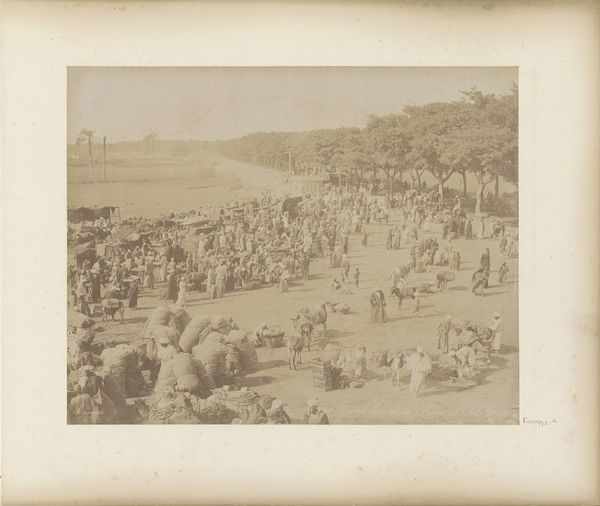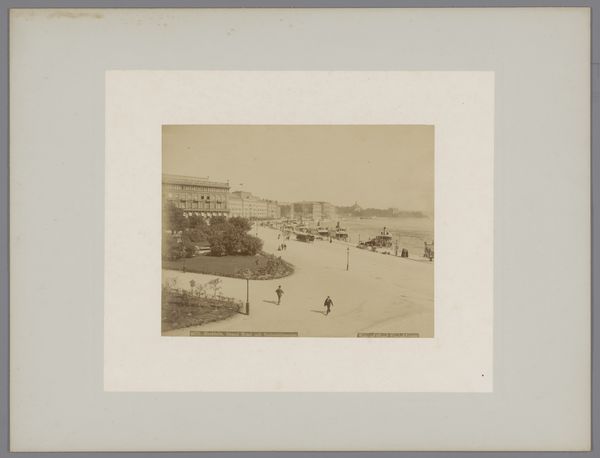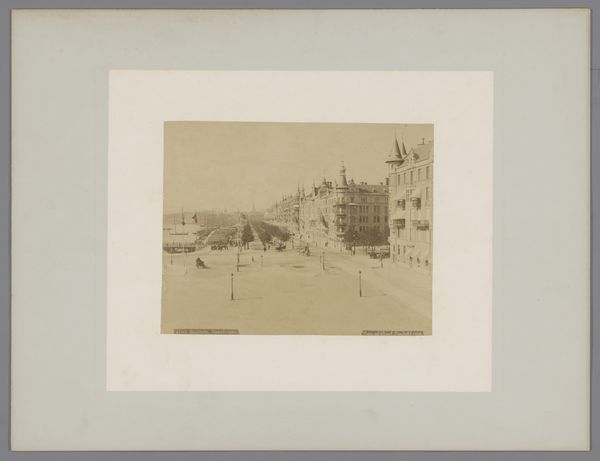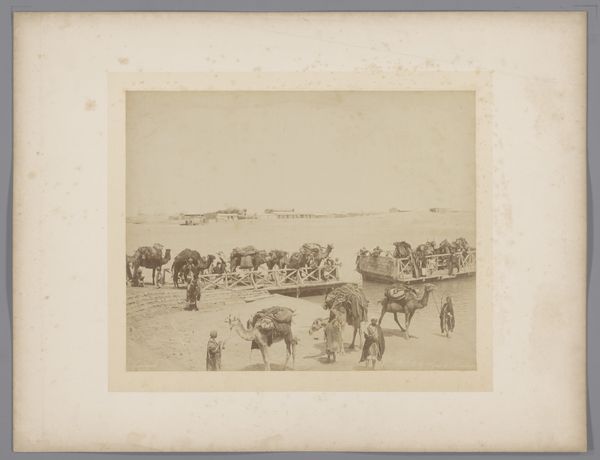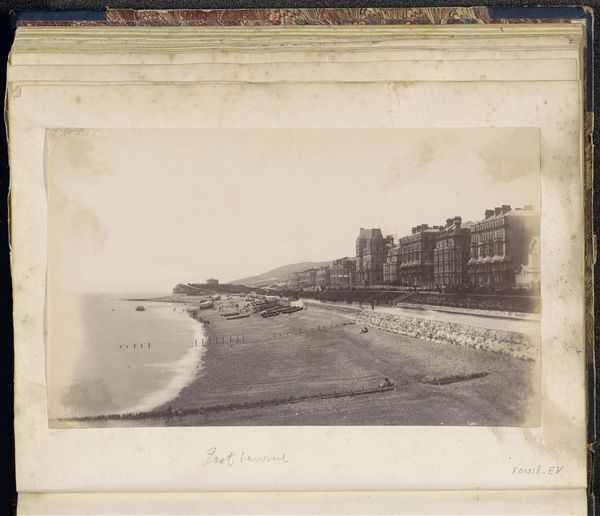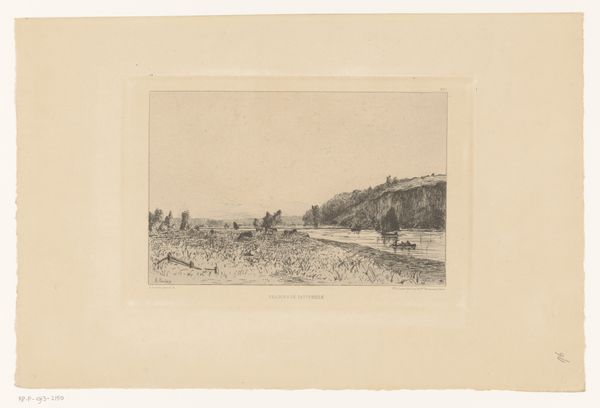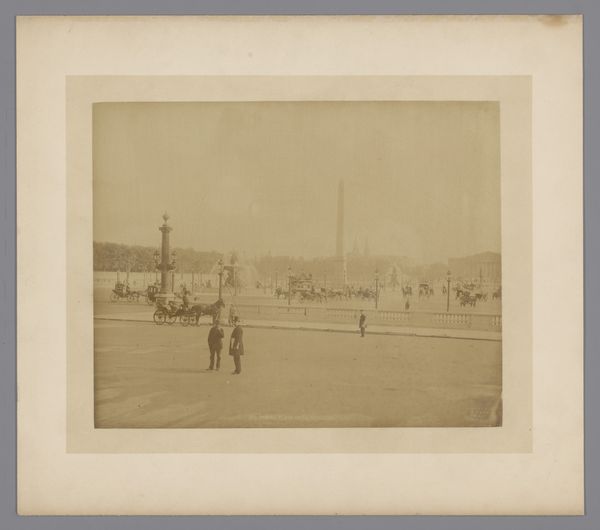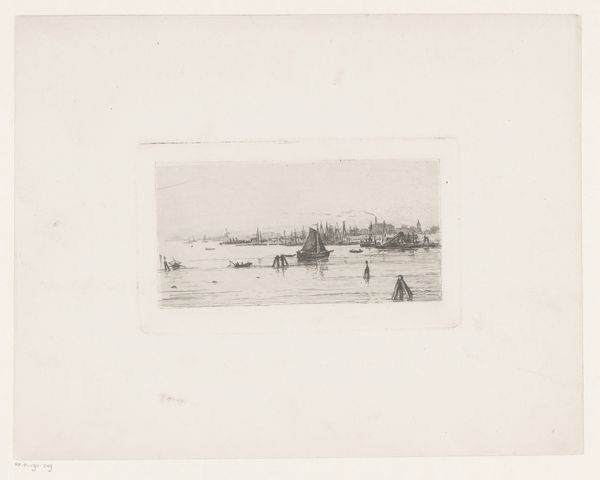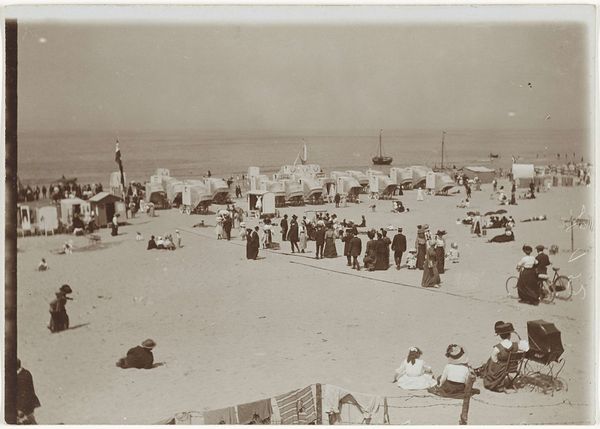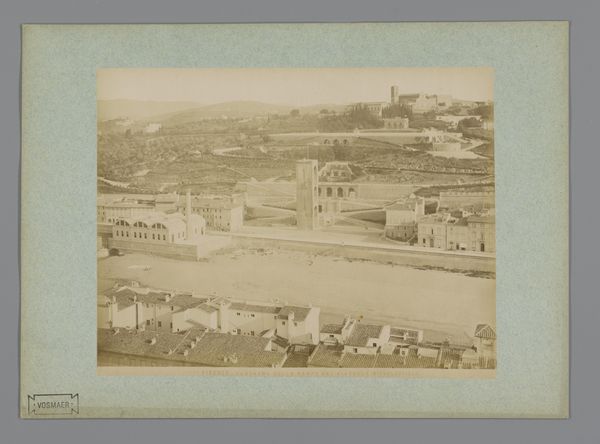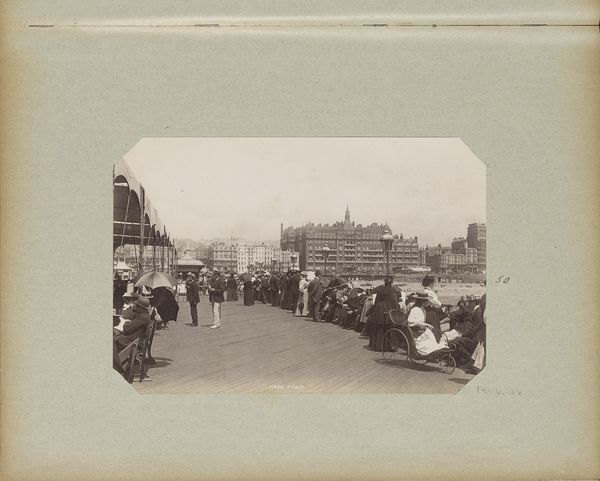
Gezicht op het strand van Brighton met badgasten, badkoetsen, kade en gebouwen c. 1880 - 1910
0:00
0:00
Dimensions: height 140 mm, width 205 mm
Copyright: Rijks Museum: Open Domain
Curator: This gelatin silver print captures Brighton Beach in its Victorian heyday. The photographer is credited to W.M. Spooner & Co., and the image is dated circa 1880 to 1910, a truly fascinating snapshot of the past. Editor: Immediately, I'm struck by the density of the composition. It's a real study in texture, with the pebbled beach and all those tightly packed figures and architecture fighting for space in the frame. Curator: The density you point out reflects the burgeoning seaside tourism industry of the late 19th century. Coastal towns like Brighton became magnets, accessible by train and offering leisure opportunities to a growing middle class. Notice the segregation implied in the bathing machines. Editor: Ah, yes. Those bathing machines speak volumes! From a purely formal perspective, they offer a structured repetition that is only broken by the crowds themselves. Curator: Indeed! These architectural objects reveal how bathing and the public display of the body was heavily policed and segregated, particularly in relation to gender. What looks like carefree leisure was carefully coded and performed. Also notice the clothing of the people on the beach! Editor: Right, and the monochrome medium does a really elegant job emphasizing those tonal qualities and the stark differentiation of shape that their outfits produce, but in a slightly obscured way—making us want to look closer. Curator: This points to photography's power as a democratizing force, capturing the sheer spectacle of a beach teeming with people. In other words, Brighton democratized a space for leisure, and photography democratized its record. Editor: Precisely, the photograph does something a painting could not in that era: provide an ostensibly objective—almost scientific—account of social habits. This view seems very typical of pictorialism, with an emphasis on atmospheric perspective—you could even argue it contains impressionist elements! Curator: I agree, we must remember that photographic production still faced technological hurdles at the time. But this opens up other lines of inquiry: namely the social changes and the historical trends that produced such an image! Editor: True. I hadn’t considered the material constraints… It really does alter my perspective on the work as a whole! Curator: Exactly! Together, those elements begin to shape the artwork's broader implications. Editor: A new reading has revealed new appreciation. Let us leave it here!
Comments
No comments
Be the first to comment and join the conversation on the ultimate creative platform.
